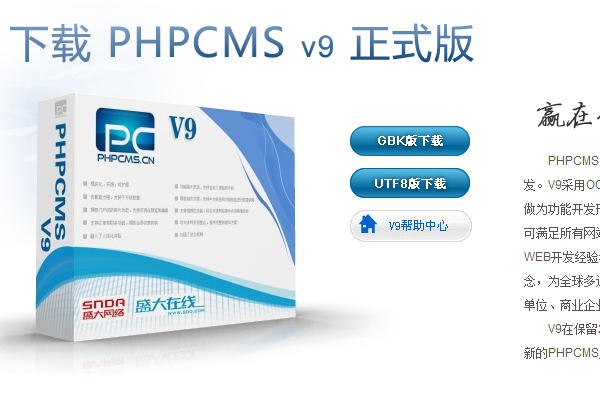本文为我阅读了 redis参考手册 之后编写,注意 php_redis 和 redis-cli 的区别(主要是返回值类型和参数用法)
Redis的 Set 是 string 类型的无序集合。集合成员是唯一的,这就意味着集合中不能出现重复的数据。
目录:
Set(集合) |
||||||
| SADD | SREM | SMEMBERS | SCARD | SMOVE | SPOP | SRANDMEMBER |
| SINTER | SINTERSTORE | SUNION0 | SUNIONSTORE | SDIFF | SDIFFSTORE | SISMEMBER |
Set(集合)
1、SADD
Redis Sadd 命令将一个或多个成员元素加入到集合中,
(1)已经存在于集合的成员元素将被忽略。
(2)假如集合 key 不存在,则创建一个只包含添加的元素作成员的集合。
(3)当集合 key 不是集合类型时,返回一个错误。
注意:在Redis2.4版本以前, SADD 只接受单个成员值。
语法:
redis 127.0.0.1:6379> SADD KEY_NAME VALUE1..VALUEN
返回值: 被添加到集合中的新元素的数量,不包括被忽略的元素。
可用版本:>= 1.0.0
时间复杂度:(N),N是被添加的元素的数量。
具体实例:
<?php
$redis = new redis();
$redis -> connect('127.0.0.1',6379);
$redis -> flushAll();
$redis -> sAdd('myset','hello');
$redis -> sAdd('myset','foo');
$redis -> sAdd('myset','hello'); // 已存在的 key 被忽略
var_dump($redis -> sMembers('myset'));
//array (size=2)
// 0 => string 'hello' (length=5)
// 1 => string 'foo' (length=3)
2、SREM
Redis Srem 命令用于移除集合中的一个或多个成员元素,不存在的成员元素会被忽略。
当 key 不是集合类型,返回一个错误。
在 Redis 2.4 版本以前, SREM 只接受单个成员值。
语法:
redis 127.0.0.1:6379> SREM KEY MEMBER1..MEMBERN
返回值: 被成功移除的元素的数量,不包括被忽略的元素。
可用版本:>= 1.0.0
时间复杂度:O(N),N为给定member元素的数量。
具体实例:
<?php
$redis = new redis();
$redis -> connect('127.0.0.1',6379);
$redis -> flushAll();
$redis -> sAdd('myset','hello');
$redis -> sAdd('myset','foo');
$redis -> sAdd('myset','world');
$redis -> sAdd('myset','hi');
$redis -> sAdd('myset','welcome');
var_dump($redis -> sRem('myset','hello','foo')); // int 2
var_dump($redis -> sMembers('myset'));
//array (size=3)
// 0 => string 'world' (length=5)
// 1 => string 'welcome' (length=7)
// 2 => string 'hi' (length=2)
3、SMEMBERS
Redis Smembers 命令返回集合中的所有的成员。 不存在的集合 key 被视为空集合。
语法:
redis 127.0.0.1:6379> SMEMBERS KEY VALUE
返回值: 集合中的所有成员。
可用版本:>= 1.0.0
时间复杂度:O(N),N为集合的基数。
具体实例:
<?php
$redis = new redis();
$redis -> connect('127.0.0.1',6379);
$redis -> flushAll();
$redis -> sAdd('myset','hello');
$redis -> sAdd('myset','foo');
$redis -> sAdd('myset','world');
$redis -> sAdd('myset','hi');
$redis -> sAdd('myset','welcome');
var_dump($redis -> sMembers('myset'));
//array (size=5)
// 0 => string 'world' (length=5)
// 1 => string 'hello' (length=5)
// 2 => string 'hi' (length=2)
// 3 => string 'foo' (length=3)
// 4 => string 'welcome' (length=7)
4、SCARD
Redis Scard 命令返回集合中元素的数量。
语法:
redis 127.0.0.1:6379> SCARD KEY_NAME
返回值:集合的数量。 当集合 key 不存在时,返回 0 。
可用版本:>= 1.0.0
时间复杂度:O(1)
具体实例:
<?php
$redis = new redis();
$redis -> connect('127.0.0.1',6379);
$redis -> flushAll();
$redis -> sAdd('myset','hello');
$redis -> sAdd('myset','foo');
$redis -> sAdd('myset','world');
$redis -> sAdd('myset','hi');
$redis -> sAdd('myset','welcome');
var_dump($redis -> sCard('myset')); // int 5
5、SMOVE
Redis Smove 命令将指定成员 member 元素从 source 集合移动到 destination 集合。
(1)SMOVE 是原子性操作。
(2)如果 source 集合不存在或不包含指定的 member 元素,则 SMOVE 命令不执行任何操作,仅返回 0 。否则, member 元素从 source 集合中被移除,并添加到 destination 集合中去。
(3)当 destination 集合已经包含 member 元素时, SMOVE 命令只是简单地将 source 集合中的 member 元素删除。
(4)当 source 或 destination 不是集合类型时,返回一个错误。
语法:
redis 127.0.0.1:6379> SMOVE SOURCE DESTINATION MEMBER
返回值:如果成员元素被成功移除,返回 1 。 如果成员元素不是 source 集合的成员,并且没有任何操作对 destination 集合执行,那么返回 0 。
可用版本:>= 1.0.0
时间复杂度:O(1)
具体实例:
<?php
$redis = new redis();
$redis -> connect('127.0.0.1',6379);
$redis -> flushAll();
$redis -> sAdd('myset','hello');
$redis -> sAdd('myset','foo');
$redis -> sAdd('myset','world');
$redis -> sAdd('myset','hi');
$redis -> sAdd('myset','welcome');
$redis -> sAdd('destinationSet','welcome');
// The first case : member 包含在 source 中
var_dump($redis -> sMove('myset','destinationSet','foo')); // boolean true
var_dump($redis -> sMembers('myset'));
//array (size=4)
// 0 => string 'hello' (length=5)
// 1 => string 'hi' (length=2)
// 2 => string 'world' (length=5)
// 3 => string 'welcome' (length=7)
// The second case : member 不在 source 中
var_dump($redis -> sMove('myset','destinationSet','not_exists')); // boolean false
var_dump($redis -> sMembers('myset'));
//array (size=4)
// 0 => string 'hi' (length=2)
// 1 => string 'world' (length=5)
// 2 => string 'hello' (length=5)
// 3 => string 'welcome' (length=7)
// The third case : destination 中已经包含 member 元素
var_dump($redis -> sMove('myset','destinationSet','welcome')); // boolean true
var_dump($redis -> sMembers('myset')); // 只是将 welcome 从 myset 中移除
//array (size=3)
// 0 => string 'world' (length=5)
// 1 => string 'hello' (length=5)
// 2 => string 'hi' (length=2)
6、SPOP
Redis Spop 命令用于移除并返回集合中的一个随机元素。
语法:
redis 127.0.0.1:6379> SPOP KEY
返回值:被移除的随机元素。 当集合不存在或是空集时,返回 nil 。
可用版本:>= 1.0.0
时间复杂度:O(1)
具体实例:
<?php
$redis = new redis();
$redis -> connect('127.0.0.1',6379);
$redis -> flushAll();
$redis -> sAdd('myset','hello');
$redis -> sAdd('myset','foo');
$redis -> sAdd('myset','world');
$redis -> sAdd('myset','hi');
$redis -> sAdd('myset','welcome');
// 其值会从原集合中移除
var_dump($redis -> sPop('myset')); // string world
var_dump($redis -> sMembers('myset'));
//array (size=4)
// 0 => string 'hi' (length=2)
// 1 => string 'foo' (length=3)
// 2 => string 'hello' (length=5)
// 3 => string 'welcome' (length=7)
7、SRANDMEMBER
Redis Srandmember 命令用于返回集合中的一个随机元素。
从 Redis 2.6 版本开始, Srandmember 命令接受可选的 count 参数:
如果 count 为正数,且小于集合基数,那么命令返回一个包含 count 个元素的数组,数组中的元素各不相同。如果 count 大于等于集合基数,那么返回整个集合。
如果 count 为负数,那么命令返回一个数组,数组中的元素可能会重复出现多次,而数组的长度为 count 的绝对值。
该操作和 SPOP 相似,但 SPOP 将随机元素从集合中移除并返回,而 Srandmember 则仅仅返回随机元素,而不对集合进行任何改动。
语法:
redis 127.0.0.1:6379> SRANDMEMBER KEY [count]
返回值:
(1)只提供集合 key 参数时,返回一个元素;
(2) 如果提供了 count 参数, 若 0<count<集合基数,那么返回一个包含count个元素的数组, 若 count>集合基数,那么返回整个集合;
(3)如果提供了 count 参数, 若 count<0,且 count的绝对值<集合基数,那么返回一个包含count个元素的数组,若 count的绝对值>集合基数,那么返回包含count个元素的数组,元素可能重复出现多次;
可用版本:>= 1.0.0
时间复杂度:O(1)
具体实例:
<?php
$redis = new redis();
$redis -> connect('127.0.0.1',6379);
$redis -> flushAll();
$redis -> sAdd('myset','hello');
$redis -> sAdd('myset','foo');
$redis -> sAdd('myset','world');
$redis -> sAdd('myset','hi');
$redis -> sAdd('myset','welcome');
// The first case : 当没有 count 参数时,返回一个随机值,其值不会从原集合中移除
var_dump($redis -> sRandMember('myset')); // string foo
var_dump($redis -> sMembers('myset'));
//array (size=5)
// 0 => string 'hello' (length=5)
// 1 => string 'hi' (length=2)
// 2 => string 'foo' (length=3)
// 3 => string 'world' (length=5)
// 4 => string 'welcome' (length=7)
// The second case : 当 0 < count < 集合基数
var_dump($redis -> sRandMember('myset',3)); // 返回包含 count 个元素的集合
//array (size=3)
// 0 => string 'world' (length=5)
// 1 => string 'hello' (length=5)
// 2 => string 'foo' (length=3)
// The third case : 当 0 < count 且 集合基数 < count
var_dump($redis -> sRandMember('myset',10)); // 返回整个集合
//array (size=5)
// 0 => string 'world' (length=5)
// 1 => string 'hello' (length=5)
// 2 => string 'foo' (length=3)
// 3 => string 'hi' (length=2)
// 4 => string 'welcome' (length=7)
// The fourth case : 当 count<0 且 |count| < 集合基数
var_dump($redis -> sRandMember('myset',-3)); // 返回包含 count 个元素的集合
//array (size=3)
// 0 => string 'hello' (length=5)
// 1 => string 'welcome' (length=7)
// 2 => string 'world' (length=5)
// The fifth case : 当 count<0 且 |count| > 集合基数
var_dump($redis -> sRandMember('myset',-8)); // 返回包含 count 个元素的集合,有重复
//array (size=8)
// 0 => string 'world' (length=5)
// 1 => string 'welcome' (length=7)
// 2 => string 'world' (length=5)
// 3 => string 'welcome' (length=7)
// 4 => string 'hello' (length=5)
// 5 => string 'hello' (length=5)
// 6 => string 'world' (length=5)
// 7 => string 'welcome' (length=7)
8、SINTER
Redis Sinter 命令返回给定所有给定集合的交集。 不存在的集合 key 被视为空集。 当给定集合当中有一个空集时,结果也为空集(根据集合运算定律)。
语法:
redis 127.0.0.1:6379> SINTER KEY KEY1..KEYN
返回值:交集成员的列表。
可用版本:>= 1.0.0
时间复杂度:O(1)
具体实例:
<?php
$redis = new redis();
$redis -> connect('127.0.0.1',6379);
$redis -> flushAll();
$redis -> sAdd('myset','hello');
$redis -> sAdd('myset','foo');
$redis -> sAdd('myset','world');
$redis -> sAdd('myset','hi');
$redis -> sAdd('myset','welcome');
$redis -> sAdd('otherset','hello');
$redis -> sAdd('otherset','world');
$redis -> sAdd('otherset','welcome');
// The first case : 集合都不为空 , 原集合不变
var_dump($redis -> sInter('myset','otherset'));
//array (size=3)
// 0 => string 'welcome' (length=7)
// 1 => string 'world' (length=5)
// 2 => string 'hello' (length=5)
// The second case : 有空集合
var_dump($redis -> sInter('myset','emptyset')); // array (size=0) empty
9、SINTERSTORE
Redis Sinterstore 命令将给定集合之间的交集存储在指定的集合中。如果指定的集合已经存在,则将其覆盖。
语法:
redis 127.0.0.1:6379> SINTERSTORE DESTINATION_KEY KEY KEY1..KEYN
返回值:交集成员的列表。
可用版本:>= 1.0.0
时间复杂度:O(N * M),N为给定集合当中基数最小的集合,M为给定集合的个数。
具体实例:
<?php
$redis = new redis();
$redis -> connect('127.0.0.1',6379);
$redis -> flushAll();
$redis -> sAdd('myset','hello');
$redis -> sAdd('myset','foo');
$redis -> sAdd('myset','world');
$redis -> sAdd('myset','hi');
$redis -> sAdd('myset','welcome');
$redis -> sAdd('otherset','hello');
$redis -> sAdd('otherset','world');
$redis -> sAdd('otherset','welcome');
$redis -> sAdd('other_destinationset','hello');
// The first case : 目标集合不存在
var_dump($redis -> sInterStore('destinationset','myset','otherset')); // int 3
var_dump($redis -> sMembers('destinationset'));
//array (size=3)
// 0 => string 'welcome' (length=7)
// 1 => string 'world' (length=5)
// 2 => string 'hello' (length=5)
// The second case : 目标集合已存在
var_dump($redis -> sInterStore('other_destinationset','myset','otherset'));
var_dump($redis -> sMembers('other_destinationset')); // 覆盖
//array (size=3)
// 0 => string 'welcome' (length=7)
// 1 => string 'world' (length=5)
// 2 => string 'hello' (length=5)
10、SUNION
Redis Sunion 命令返回给定集合的并集。不存在的集合 key 被视为空集。
语法:
redis 127.0.0.1:6379> SUNION KEY KEY1..KEYN
返回值:并集成员的列表。
可用版本:>= 1.0.0
时间复杂度:O(N),N是所有给定集合的成员数量之和
具体实例:
<?php
$redis = new redis();
$redis -> connect('127.0.0.1',6379);
$redis -> flushAll();
$redis -> sAdd('myset','hello');
$redis -> sAdd('myset','foo');
$redis -> sAdd('myset','world');
$redis -> sAdd('myset','hi');
$redis -> sAdd('myset','welcome');
$redis -> sAdd('otherset','hello');
$redis -> sAdd('otherset','world');
$redis -> sAdd('otherset','good');
// The first case : 集合都不为空 , 原集合不变
var_dump($redis -> sUnion('myset','otherset'));
//array (size=6)
// 0 => string 'world' (length=5)
// 1 => string 'hello' (length=5)
// 2 => string 'welcome' (length=7)
// 3 => string 'good' (length=4)
// 4 => string 'hi' (length=2)
// 5 => string 'foo' (length=3)
// The second case : 有空集合
var_dump($redis -> sUnion('myset','emptyset'));
//array (size=5)
// 0 => string 'world' (length=5)
// 1 => string 'hello' (length=5)
// 2 => string 'foo' (length=3)
// 3 => string 'hi' (length=2)
// 4 => string 'welcome' (length=7)
11、SUNIONSTORE
Redis Sunionstore 命令将给定集合的并集存储在指定的集合 destination 中。如果 destination 已经存在,则将其覆盖。
语法:
redis 127.0.0.1:6379> SUNIONSTORE DESTINATION KEY KEY1..KEYN
返回值:结果集中的元素数量。
可用版本:>= 1.0.0
时间复杂度:O(N),N是所有给定集合的成员数量之和。
具体实例:
<?php
$redis = new redis();
$redis -> connect('127.0.0.1',6379);
$redis -> flushAll();
$redis -> sAdd('myset','hello');
$redis -> sAdd('myset','foo');
$redis -> sAdd('myset','world');
$redis -> sAdd('myset','hi');
$redis -> sAdd('myset','welcome');
$redis -> sAdd('otherset','hello');
$redis -> sAdd('otherset','world');
$redis -> sAdd('otherset','good');
$redis -> sAdd('other_destinationset','hello');
// The first case : 目标集合不存在
var_dump($redis -> sUnionStore('destinationset','myset','otherset')); // int 6
var_dump($redis -> sMembers('destinationset'));
//array (size=6)
// 0 => string 'world' (length=5)
// 1 => string 'hello' (length=5)
// 2 => string 'welcome' (length=7)
// 3 => string 'good' (length=4)
// 4 => string 'hi' (length=2)
// 5 => string 'foo' (length=3)
// The second case : 目标集合已存在
var_dump($redis -> sUnionStore('other_destinationset','myset','otherset')); // int 6
var_dump($redis -> sMembers('other_destinationset')); // 覆盖
//array (size=6)
// 0 => string 'world' (length=5)
// 1 => string 'hello' (length=5)
// 2 => string 'welcome' (length=7)
// 3 => string 'good' (length=4)
// 4 => string 'hi' (length=2)
// 5 => string 'foo' (length=3)
12、SDIFF
Redis Sdiff 命令返回给定集合之间的差集。不存在的集合 key 将视为空集。
语法:
redis 127.0.0.1:6379> SDIFF FIRST_KEY OTHER_KEY1..OTHER_KEYN
返回值:包含差集成员的列表。
可用版本:>= 1.0.0
时间复杂度:O(N),N是所有给定集合的成员数量之和。
具体实例:
<?php
$redis = new redis();
$redis -> connect('127.0.0.1',6379);
$redis -> flushAll();
$redis -> sAdd('myset','hello');
$redis -> sAdd('myset','foo');
$redis -> sAdd('myset','world');
$redis -> sAdd('myset','hi');
$redis -> sAdd('myset','welcome');
$redis -> sAdd('otherset','hello');
$redis -> sAdd('otherset','world');
$redis -> sAdd('otherset','good');
var_dump($redis -> sDiff('myset','otherset')); // 此处的差集指的是第一个集合的元素,不包含后面集合的元素
//array (size=3)
// 0 => string 'welcome' (length=7)
// 1 => string 'foo' (length=3)
// 2 => string 'hi' (length=2)
13、SDIFFSTORE
Redis Sdiffstore 命令将给定集合之间的差集存储在指定的集合中。如果指定的集合 key 已存在,则会被覆盖。
语法:
redis 127.0.0.1:6379> SDIFFSTORE DESTINATION_KEY KEY1..KEYN
返回值:结果集中的元素数量。
可用版本:>= 1.0.0
时间复杂度:O(N),N是所有给定集合的成员数量之和。
具体实例:
<?php
$redis = new redis();
$redis -> connect('127.0.0.1',6379);
$redis -> flushAll();
$redis -> sAdd('myset','hello');
$redis -> sAdd('myset','foo');
$redis -> sAdd('myset','world');
$redis -> sAdd('myset','hi');
$redis -> sAdd('myset','welcome');
$redis -> sAdd('otherset','hello');
$redis -> sAdd('otherset','world');
$redis -> sAdd('otherset','good');
$redis -> sAdd('other_destinationset','hello');
// The first case : 目标集合不存在
var_dump($redis -> sDiffStore('destinationset','myset','otherset')); // int 3, 此处指的是第一个集合中的元素
var_dump($redis -> sMembers('destinationset'));
//array (size=3)
// 0 => string 'welcome' (length=7)
// 1 => string 'foo' (length=3)
// 2 => string 'hi' (length=2)
// The second case : 目标集合已存在
var_dump($redis -> sDiffStore('other_destinationset','myset','otherset')); // int 3
var_dump($redis -> sMembers('other_destinationset')); // 覆盖
//array (size=3)
// 0 => string 'welcome' (length=7)
// 1 => string 'foo' (length=3)
// 2 => string 'hi' (length=2)
14、SISMEMBER
Redis Sismember 命令判断成员元素是否是集合的成员。
语法:
redis 127.0.0.1:6379> SISMEMBER KEY VALUE
返回值:如果成员元素是集合的成员,返回 1 。 如果成员元素不是集合的成员,或 key 不存在,返回 0 。
可用版本:>= 1.0.0
时间复杂度:O(1)
具体实例:
<?php
$redis = new redis();
$redis -> connect('127.0.0.1',6379);
$redis -> flushAll();
$redis -> sAdd('myset','hello');
$redis -> sAdd('myset','foo');
$redis -> sAdd('myset','world');
$redis -> sAdd('myset','hi');
$redis -> sAdd('myset','welcome');
var_dump($redis -> sIsMember('myset','hello')); // true
var_dump($redis -> sIsMember('myset','good')); // false
如有转载,请注明出处:http://www.cnblogs.com/chrdai/p/6846352.html




发表评论 取消回复